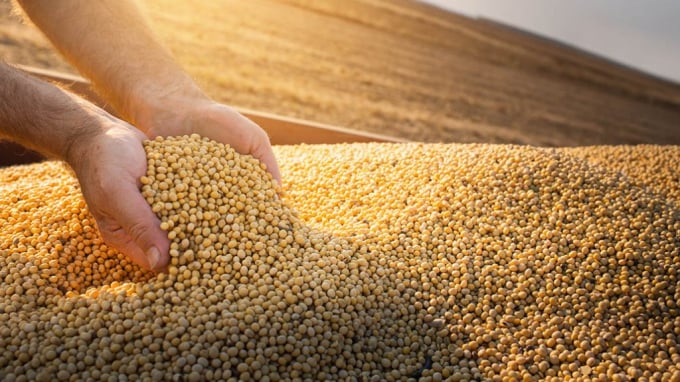November 27, 2025 | 23:47 GMT +7
November 27, 2025 | 23:47 GMT +7
Hotline: 0913.378.918
November 27, 2025 | 23:47 GMT +7
Hotline: 0913.378.918

Soybean prices have increased 72% since the end of last year. Photo: TL.
The Vietnam Industry and Trade Center (VITIC) cited the latest report from Rabobank saying that the price of the lean hog is escalating in almost all markets in the world as food processors are rushing to source raw pork and consumers’ demand starts increasing.
Meanwhile, the recovery of the world's pig production is facing many risks and the pig industry has become more cautious, even shrinking in some places. First of all, African swine fever in some areas is unexpectedly harder to deal with causing the slowdown of recovery of pig production in Asia. In addition, the world's pig production is still facing many other diseases, such as Porcine Reproductive and Respiratory Syndrome (PRRS), acute porcine diarrhea (PEDv), causing a shortage of supply. In the US and Mexico, classical swine fever (CSF) re-emerged in Japan and Brazil among others.
Besides, another risk that the global livestock industry is facing comes from the soaring feeding prices and production materials, which gained 35% averagely year-on-year in the first months of this year. In pig farming, the expense for feed gets the lion’s share in the total production cost. Therefore, regional differences in supply and prices of feed and materials are creating a gap in pig prices as well as the recovery of the pig industry.
Due to the high prices of feed and feeding materials, countries that depend on imported feeding materials will expose to more risks than others. This will be exacerbated by fluctuations in currency rates in each country.
For example, China is working to restore pig production. As a result, the country's demand for animal feed increased sharply, causing the global price of oilseeds and corn to skyrocket. Even though, China's accelerated purchase of grains has pushed up the imbalance of global corn and soybean.
In the first four months of this year, China's corn imports increased sharply by 438% year-on-year to 6.7 million tons, or about 20% of the total global corn trade. Because the world's corn stocks have been depleted since last year, China's purchase of such a large volume has caused corn prices to increase sharply by over 71% in the past year.
Animal protein experts said that oilseed stocks in some areas of the world are reaching near the crisis level. Soybean prices have risen 72% since the end of last year. Prices are so high that producers have had to look to other types of nutmeal, but global reserves are generally depleted, and demand for some of these other nuts is also increasing.
Rabobank said that in the face of costly livestock feed and materials in the world, many countries are seeking a way to ease the situation by changing the proportion of ingredients in the feeding.
China, the country with the largest pig herd in the world, is looking for ways to solve the problem of animal feed. In the recently announced plan, China's agricultural industry demanded farmers to limit the use of corn and soybean meal in livestock and offer domestic incentives to increase corn production. Many other countries are also shifting to other alternative feed materials, such as wheat.
Translated by Linh Linh
/2025/11/24/3616-2-141832_513.jpg)
(VAN) FSC certification has helped increase the value of thousands of hectares of planted forest timber under the management of the Xuan Loc Protection Forest Management Board, particularly in terms of selling prices.

(VAN) More than 100 shoppers queued for a chance to get a kilo or so of Japanese rice for 500 yen ($3.32) by heaping as much grain into a small wooden box as possible.

(VAN) Benchmark international prices of milled declined in October as harvests started or improved in some parts of the globe.

(VAN) Show cause orders will be issued to retailers who sell imported rice at prices exceeding the maximum suggested retail price (MSRP) of P43 per kilo, Philippines Agriculture Secretary said in a statement on Thursday.

(VAN) Coffee prices on October 20, 2025, remained stable domestically, trading at 113,500–114,500 VND/kg. Similarly, global coffee prices also moved sideways.

(VAN) By October, Vietnam’s coffee exports had surpassed USD 7 billion for the first time and will exceed USD 8 billion within this year.

(VAN) Illinois rancher says Texas, Oklahoma, Kansas lost grass and forage, forcing massive cattle liquidation.